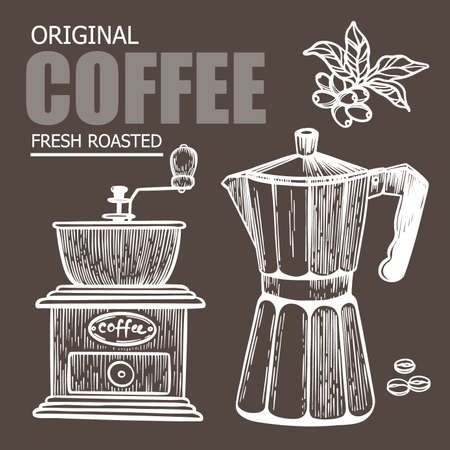A Brief History of the French Press
When one thinks of a quintessential British café, images of bustling baristas, the gentle clatter of porcelain cups, and the deep aroma of freshly brewed coffee are never far behind. Amongst the myriad ways to enjoy coffee in Britain, the French Press—known locally as a cafetière—holds a unique place at the heart of this culture. Its origins can be traced back to 19th-century France, where it was first patented by Attilio Calimani in 1929. The elegant simplicity of its design—a glass beaker, a plunger, and a fine mesh filter—quickly won over coffee aficionados across Europe. By the mid-20th century, the French Press had firmly established itself as a staple in British homes and cafés, celebrated for its ability to produce a rich, full-bodied cup that highlights the nuanced flavours of freshly ground beans. Today, whether enjoyed during a leisurely Sunday breakfast or shared amongst friends in a cosy London café, the French Press is more than just a brewing device; it is an enduring symbol of continental sophistication woven seamlessly into British daily life.
2. Choosing the Right Beans
If there’s one thing that truly elevates a French Press brew, it’s the careful selection of coffee beans. In Britain, with our growing appreciation for specialty coffee and artisanal roasters, sourcing the perfect bean has become almost as important as the brewing process itself. Whether you’re scouring your local high street for independent roasteries or browsing online UK-based suppliers, understanding what to look for can make all the difference.
Understanding Roast Profiles
British coffee culture has evolved beyond simply “dark” or “light” roast preferences. Many UK roasters now offer nuanced medium roasts that strike a balance between brightness and depth—perfect for the full-bodied extraction of a French Press. If you fancy something with a touch more character, single-origin beans from regions such as Ethiopia or Colombia are increasingly popular at British cafes and markets. These beans often bring fruity or floral notes that shine through when brewed in a cafetière.
Popular Roasting Styles in the UK
| Roast Style | Flavour Profile | Best For |
|---|---|---|
| Light Roast | Bright, acidic, complex | Highlighting origin flavours; black coffee lovers |
| Medium Roast | Balanced, sweet, rounded | All-rounder; great with milk or black |
| Dark Roast | Bitter, smoky, bold | Lovers of strong, traditional flavours |
Sourcing Locally Roasted Beans
The UK boasts an ever-growing number of independent coffee roasters—from London’s bustling Borough Market to Edinburgh’s artisan quarters. Supporting local not only ensures freshness but also allows you to explore unique blends crafted to British tastes. Many roasteries provide detailed tasting notes on their packaging, helping you match your selection to your preferred flavour profile.
Tips for Selecting Your Beans
- Check the roast date—fresher is always better for French Press brewing.
- Opt for whole beans rather than pre-ground for maximum aroma and flavour.
- If possible, ask your local barista or roaster for recommendations tailored to cafetière brewing.
Summary Table: Bean Selection Checklist
| Criteria | Recommendation |
|---|---|
| Roast Date | Within 2-4 weeks of purchase |
| Origin | Single origin for distinct notes; blends for balance |
| Roast Level | Medium recommended for versatility in French Press |
Sourcing and selecting beans is where your French Press journey truly begins—embrace the diversity offered by British roasters and enjoy discovering your ideal cup, one bag at a time.

3. Essential Equipment and Preparation
If you’re keen to master the art of French press coffee in a British kitchen, assembling the right kit is your first step towards brewing brilliance. The essentials are few, but each plays a distinct role in shaping your morning ritual.
The French Press: Your Coffee Companion
The heart of this process is, of course, the French press itself. In the UK, youll find a range of sizes and styles—opt for a sturdy glass or stainless steel model with a reliable plunger and fine mesh filter to ensure that classic rich body without unwanted grit. Brands like Bodum are favourites on British high streets for their durability and timeless design.
Kettle: For Perfectly Boiled Water
No British kitchen is complete without a trusty kettle. Whether you prefer an electric model for speed or a stovetop version for ceremony, ensure it can deliver water just off the boil—ideally around 92–96°C—to coax out the best flavours from your beans. Many UK homes favour variable-temperature kettles these days, which make precision simple even before that first cup.
Coffee Grinder: Freshness at Its Peak
Freshly ground beans are non-negotiable for top-tier French press coffee. Invest in a burr grinder (manual or electric) for an even, coarse grind—the key to extracting those robust notes without bitterness. British brands like Dualit offer reliable grinders that blend seamlessly into any stylish kitchen setup.
Scales and Timer: For Consistency
For those who appreciate precision, digital kitchen scales help you measure both beans and water to perfection—a must for replicating results cup after cup. Add a simple timer (or use your mobile) to track steeping time; four minutes is the sweet spot favoured by many baristas across Britain.
Other Handy Tools
A long-handled spoon or stirrer ensures even extraction, while a quality mug—preferably thick-walled to keep your brew hot—finishes the ritual with British comfort and style. With these essentials in hand, you’re set to embark on a coffee journey as refined as any afternoon tea.
4. The Brewing Process: Step-by-Step
Crafting the perfect cup of French Press coffee is a satisfying ritual, especially when you tailor each step to suit British tastes. Here’s your comprehensive, step-by-step guide, from heating the kettle to plunging with finesse.
Step 1: Measure Your Coffee and Water
The ideal French Press ratio for a balanced brew is typically 1:15—one part coffee to fifteen parts water. For an 8-cup cafetière (around 1 litre), use about 65g of freshly ground coffee.
| Cup Size | Coffee (g) | Water (ml) |
|---|---|---|
| Single (350ml) | 23g | 350ml |
| 4-Cup (500ml) | 33g | 500ml |
| 8-Cup (1000ml) | 65g | 1000ml |
Step 2: Heat Your Water Correctly
Brew temperature makes all the difference. For British palates—often favouring a smoother, less bitter cup—aim for water just off the boil, around 92–96°C. Boil the kettle, then let it sit for about 30 seconds before pouring.
Step 3: Add Coffee Grounds and Pour Water
Add your measured grounds to the cafetière. Start your timer and pour in half the water, ensuring even saturation. Give it a gentle stir with a wooden or plastic spoon to release the aroma and ensure an even extraction.
Step 4: Steep and Stir Again
Place the lid on without pressing down the plunger. Let the coffee steep for about 4 minutes—a sweet spot for most British drinkers who appreciate both body and clarity. At the halfway mark (about 2 minutes), give another light stir for a richer profile.
| Steep Time (minutes) | Taste Profile |
|---|---|
| 3 mins | Lighter, brighter flavour—ideal for delicate roasts or those preferring subtlety. |
| 4 mins | Balanced, full-bodied—classic French Press experience suited for most British preferences. |
| 5+ mins | Bolder, more robust—suits those craving depth and intensity, but may be too strong for some. |
Step 5: Plunge and Serve Immediately
Slowly press down the plunger with steady pressure. Pour straight away into your favourite mug or teacup to prevent over-extraction—a tip that ensures your brew remains bright rather than bitter. Whether enjoyed black or with a dash of milk, savour every sip of your homemade French Press coffee—the British way.
5. Serving and Tasting Notes
How to Serve Your French Press Coffee the British Way
Once your French press coffee is brewed to perfection, presenting it with a touch of British elegance elevates the entire experience. Begin by decanting your coffee into a pre-warmed ceramic or porcelain pot—this not only keeps the coffee warm but also adds a refined, homely feel reminiscent of traditional English tea service. Opt for classic cups and saucers instead of mugs, ideally in fine bone china if you want to truly channel that timeless British aesthetic. Always provide a small jug of warm milk on the side; while purists may take their coffee black, offering milk allows guests to tailor their cup as they wish.
Tasting Notes: What to Expect from Your Brew
A well-brewed French press delivers a full-bodied cup with rich mouthfeel and pronounced flavours. Depending on your chosen beans, you might detect notes of dark chocolate, toasted nuts, or even hints of dried fruit. The British palate tends to favour balanced acidity and subtle sweetness—so taste mindfully, looking for complexity without overwhelming bitterness. Take a moment to savour the aroma before sipping; this ritual is as much about appreciating the nuances as it is about refreshment.
Perfect Pairings: Elevate Your Coffee Experience
No British coffee break is complete without a thoughtful pairing. For morning indulgence, serve your French press coffee with classic buttered toast or flaky croissants. In the afternoon, opt for delicate biscuits like shortbread or crisp ginger snaps—traditional favourites that complement coffee’s robust profile. If entertaining guests, consider offering small pastries or scones with clotted cream and strawberry preserve for that unmistakable English charm.
Presentation Tips for an Elegant Touch
The art of serving lies in the details. Lay out your table with a crisp linen cloth and arrange everything neatly—a tray with coffee pot, cups, saucers, spoons, milk jug, and sugar bowl (cubes for that classic touch). Fresh flowers or a sprig of greenery add understated sophistication. Remember: simplicity paired with thoughtful touches creates an inviting atmosphere where every sip feels special.
6. Sustainable Brewing and Local Sourcing
Brewing French press coffee isnt just about flavour and ritual—its an opportunity to make choices that are kinder to the planet and supportive of local communities. When you select eco-friendly practices, your morning cup becomes a small but meaningful act of sustainability. Here’s how you can infuse your daily routine with mindful decisions, all while enjoying a classic British brew.
Choose Ethically Sourced Beans
Start by seeking out coffee beans that are ethically sourced and certified—look for Fairtrade or Rainforest Alliance logos on packaging. These certifications ensure fair wages for farmers and sustainable agricultural practices, reducing harm to both people and planet.
Support Local British Roasters
The UK is home to an ever-growing number of independent coffee roasters who prioritise quality and ethical sourcing. By buying from local British roasteries, you not only enjoy fresher beans but also help cut down on transport emissions. Explore neighbourhood markets, specialty shops, or order directly from roasters such as Workshop Coffee (London), North Star Coffee (Leeds), or Clifton Coffee Roasters (Bristol). Supporting these local businesses helps keep the UK’s coffee scene vibrant and innovative.
Opt for Reusable Equipment
A stainless steel or glass French press is a long-lasting investment compared to single-use pods or filters. Pair it with a reusable coffee scoop and cloth filters if needed. Not only do these options reduce waste, but they also add to the tactile pleasure of brewing by hand.
Mindful Water Usage & Composting
Use only as much water as you need when boiling the kettle—an easy way to save energy and reduce your carbon footprint in line with British sustainability habits. Afterwards, don’t bin those used coffee grounds! They’re brilliant for composting or enriching garden soil—a tip beloved by many a green-thumbed Brit.
In essence, every stage of your French press journey—from bean selection to disposal—can reflect thoughtful choices that benefit both the environment and your local community. With each cup, savour not just the taste but also the knowledge that you’re part of a more sustainable coffee culture right here in Britain.


